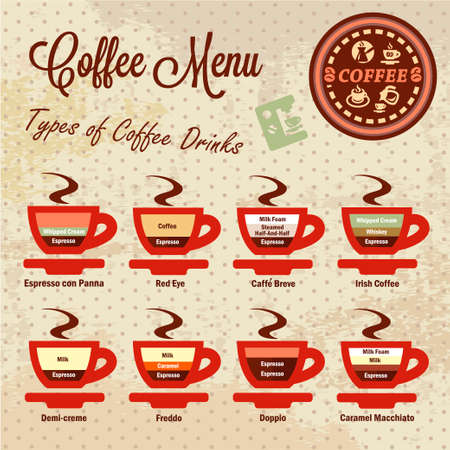1. Understanding Your Espresso Machine
Before you can pull a great espresso shot, it’s important to get familiar with the different types of espresso machines you’ll find in American homes and coffee shops. Each type of machine has unique features that affect how your espresso turns out. Here’s a quick breakdown:
Main Types of Espresso Machines in the U.S.
| Type | How It Works | Level of Control | Who Its For |
|---|---|---|---|
| Semi-Automatic | You grind, tamp, and start/stop the shot manually. | High – You control most steps. | Home baristas, coffee enthusiasts. |
| Automatic | You grind and tamp; machine stops shot automatically. | Medium – Less manual timing needed. | Coffee lovers who want some convenience. |
| Super-Automatic (Fully Automatic) | The machine grinds, tamps, brews, and stops all by itself. | Low – Just press a button. | Busy people, offices, beginners. |
Features That Impact Your Espresso Shot
- Boiler Type: Single or dual boilers affect how quickly you can steam milk after brewing espresso.
- Pressure: Machines should reach 9 bars of pressure for optimal extraction.
- Temperature Stability: Consistent water temperature helps avoid bitter or sour flavors.
- Brew Time Control: More control lets you fine-tune your shot to taste.
Why This Matters
The type of machine you use changes not just how hands-on you need to be, but also how much you can tweak your espresso. Semi-automatic models are popular among American home baristas who like to experiment, while super-automatic ones are common in offices or busy households where convenience is key. Understanding what each machine offers helps you make better coffee from the very first step.
2. Choosing and Grinding Your Coffee Beans
Picking the right coffee beans and grinding them properly is the foundation for pulling a great espresso shot. Here’s how you can make sure you’re using the best beans and getting the grind just right for your machine.
How to Select High-Quality Beans
When it comes to espresso, not all beans are created equal. Look for specialty-grade coffee, which means the beans have been carefully sourced, roasted, and graded. In America, many local roasters offer fresh beans that are roasted in small batches for peak flavor. Here’s what to keep in mind:
- Freshness: Always check the roast date on the bag. Try to use beans within 2-4 weeks of roasting.
- Roast Level: Medium to dark roasts usually work best for espresso as they create a rich, balanced flavor with a good crema.
- Origin: Single-origin beans highlight unique flavors, while blends offer consistency and balance—choose based on your taste preference.
Sourcing Beans from Local American Roasters
Supporting local coffee roasters is a great way to get fresh beans and discover new flavors. Many American cities have fantastic specialty roasters—search online or ask at your favorite café for recommendations. Some popular options include Stumptown (Portland), Counter Culture (Durham), and Blue Bottle (Oakland).
| Roaster Name | Location | Bean Options |
|---|---|---|
| Stumptown Coffee Roasters | Portland, OR | Single-origin & Blends |
| Counter Culture Coffee | Durham, NC | Sustainable Sourcing |
| Blue Bottle Coffee | Oakland, CA | Organic & Seasonal Beans |
| Your Local Café Roaster | Your City! | Ask about their Espresso Blend |
The Perfect Espresso Grind Size
The grind size makes a huge difference in how your espresso tastes. For espresso, you need a fine grind—almost like table salt. If it’s too coarse, your shot will be weak; too fine, and it’ll be bitter or won’t flow at all. Invest in a burr grinder (not blade) for consistent results.
Troubleshooting Grind Size Issues
| If Your Shot Is… | What to Adjust? |
|---|---|
| Brewed too quickly (under 20 sec) | Grind finer |
| Brewed too slowly (over 35 sec) | Grind coarser |
| Tastes sour or watery | Use finer grind and tamp harder |
| Tastes bitter or burnt | Use coarser grind or less pressure when tamping |
Selecting high-quality beans and dialing in your grind is key to making café-quality espresso at home. Next up: measuring and dosing your coffee perfectly every time!

3. Dosing and Tamping Like a Pro
If you want to pull the perfect espresso shot, nailing your dosing and tamping is non-negotiable. This step is where you set the foundation for your espresso’s flavor, strength, and consistency. Even with the best machine, if your coffee dose and tamp are off, you’ll never get that sweet spot of rich crema and balanced taste Americans love in their daily cup.
How Much Coffee Should You Use?
The amount of ground coffee you use—known as “the dose”—is key for every shot. For most home espresso machines commonly found in the U.S., you’ll want to use these guidelines:
| Basket Size | Recommended Dose (grams) |
|---|---|
| Single (1 oz shot) | 7-9g |
| Double (2 oz shot) | 18-20g |
| Triple (rare at home) | 21g+ |
If you don’t have a scale, a standard U.S. tablespoon holds about 5 grams of ground espresso. But for true consistency, pick up an inexpensive digital scale—you’ll thank yourself later!
Tamping: Getting It Just Right
Tamping compresses your grounds to create even resistance for water flow. Here’s how to tamp like a pro, whether you’re using a Breville, DeLonghi, Gaggia Classic, or another popular American machine:
- Distribute evenly: Level out the coffee in your portafilter so it’s flat from edge to edge.
- Tamp firmly: Hold your tamper like a doorknob and press straight down with about 30 pounds of pressure. You don’t need to overthink it—just aim for firm and steady.
- Polish: Give the tamper a gentle twist at the end to smooth the surface. This helps prevent channeling (water sneaking through cracks).
Quick Tips for Consistent Results
- Use freshly ground coffee whenever possible—pre-ground loses flavor fast.
- If your shot pulls too fast or tastes weak, try increasing your dose or tamping a bit harder.
- If your shot is bitter or slow, use less coffee or lighten up on your tamp.
- Keep your portafilter clean—old grounds can ruin new shots.
Dosing & Tamping Troubleshooting Table
| Issue | Possible Cause | Fix |
|---|---|---|
| Watery shot, no crema | Dose too low or tamp too light | Add more grounds or tamp harder |
| Bitter, over-extracted shot | Dose too high or tamp too hard | Reduce dose or tamp lighter |
| Uneven extraction (blond spots) | Poor distribution/tamp unevenly | Smooth grounds before tamping and press evenly |
Getting dosing and tamping right will level-up your espresso game, setting you up for delicious shots every time—just like your favorite local café.
4. Dialing In: Shot Timing and Extraction
Why Shot Timing Matters
Getting the timing right is one of the most important steps in pulling a great espresso shot. In the U.S., baristas often talk about “dialing in” their espresso, which means adjusting your grind size, dose, and tamp to get the flavor just right. The perfect shot typically takes between 25–30 seconds from the moment you start your machine until the last drop hits your cup.
Step-by-Step: Timing Your Espresso Shot
- Weigh and Dose: Use a scale to measure your coffee grounds. Most American baristas use 18–20 grams for a double shot.
- Tamp Evenly: Tamp with even pressure—think about 30 pounds of force.
- Start the Timer: As soon as you hit the brew button, start your timer or use the built-in timer on machines like Breville Barista Express or Gaggia Classic Pro.
- Watch the Flow: The first drops should appear around 5–7 seconds. The espresso should flow like warm honey—not too fast, not too slow.
- Stop at 25–30 Seconds: Stop brewing when you reach 25–30 seconds or when you’ve pulled about 36–40 grams (1.2–1.4 oz) of liquid for a double shot.
Troubleshooting Common Extraction Problems
| Problem | What You See | How to Fix It |
|---|---|---|
| Under-extracted (Sour) | Pale crema, watery, sour taste, fast flow (under 20 sec) | Grind finer, increase dose, tamp harder |
| Over-extracted (Bitter) | Dark crema, thick, bitter taste, slow flow (over 35 sec) | Grind coarser, decrease dose, tamp lighter |
| Channeling | Sputtering, uneven extraction, weak flavor | Tamp more evenly, check for level bed of grounds, distribute evenly before tamping |
| No Crema | No golden foam on top, flat taste | Use fresher beans, adjust grind size or machine pressure |
Pro Tips from American Baristas
- Purge Your Group Head: Run hot water through before every shot to keep temps steady.
- Brew Ratio Matters: A common ratio is 1:2—so if you use 18g in, aim for 36g out.
- Keep It Consistent: Always use the same dose and tamp pressure for each shot while dialing in.
- Taste Test: Don’t be afraid to taste and adjust—flavor comes first!
5. Serving and Enjoying Your Perfect Shot
The Finishing Touches: Presentation Matters
After pulling that rich, aromatic espresso shot, how you serve it makes a real difference in the experience. In the U.S., most coffee lovers appreciate attention to detail—from the cup you use to how you present that golden crema. Here’s a quick guide:
| Item | Why It Matters | American Preference |
|---|---|---|
| Demitasse Cup (2–3 oz) | Keeps espresso hot and showcases crema | Ceramic is classic; glass cups are trendy for home use |
| Spoon | For stirring in sugar or tasting the crema first | Tiny metal spoons are common in cafes |
| Crema Appreciation | Indicates freshness and quality of the shot | Americans often swirl or sip the crema first |
| Water Chaser | Cleanses the palate before sipping espresso | A small glass of sparkling or still water is typical in specialty cafes |
How Americans Enjoy Espresso at Home vs Cafes
At Home
- Straight Shots: Many home baristas pull single or double shots and enjoy them as-is, focusing on flavor.
- Add-Ons: Sugar or a twist of lemon peel is sometimes added for a personal touch.
- Espresso Drinks: Homemade lattes, cappuccinos, or Americanos are popular, especially with automatic machines.
In Cafes Across America
- Single or Double Espresso: Served in demitasse cups, often with a sparkling water chaser.
- Café Culture: Socializing over espresso is big in urban coffee shops—sometimes enjoyed “for here” at the bar, Italian-style.
- Crema Check: Enthusiasts check the quality of crema before sipping or mixing in sugar.
- Linger Longer: Some customers savor their shot slowly, while others take it “to go”—a uniquely American habit!
The Little Details Make It Special
No matter where you’re enjoying your espresso shot, paying attention to these small details—like using the right cup and appreciating the crema—can turn a simple drink into something memorable. Whether you’re sharing with friends at home or grabbing a quick pick-me-up at your favorite local café, these finishing touches help make every espresso moment just right.


